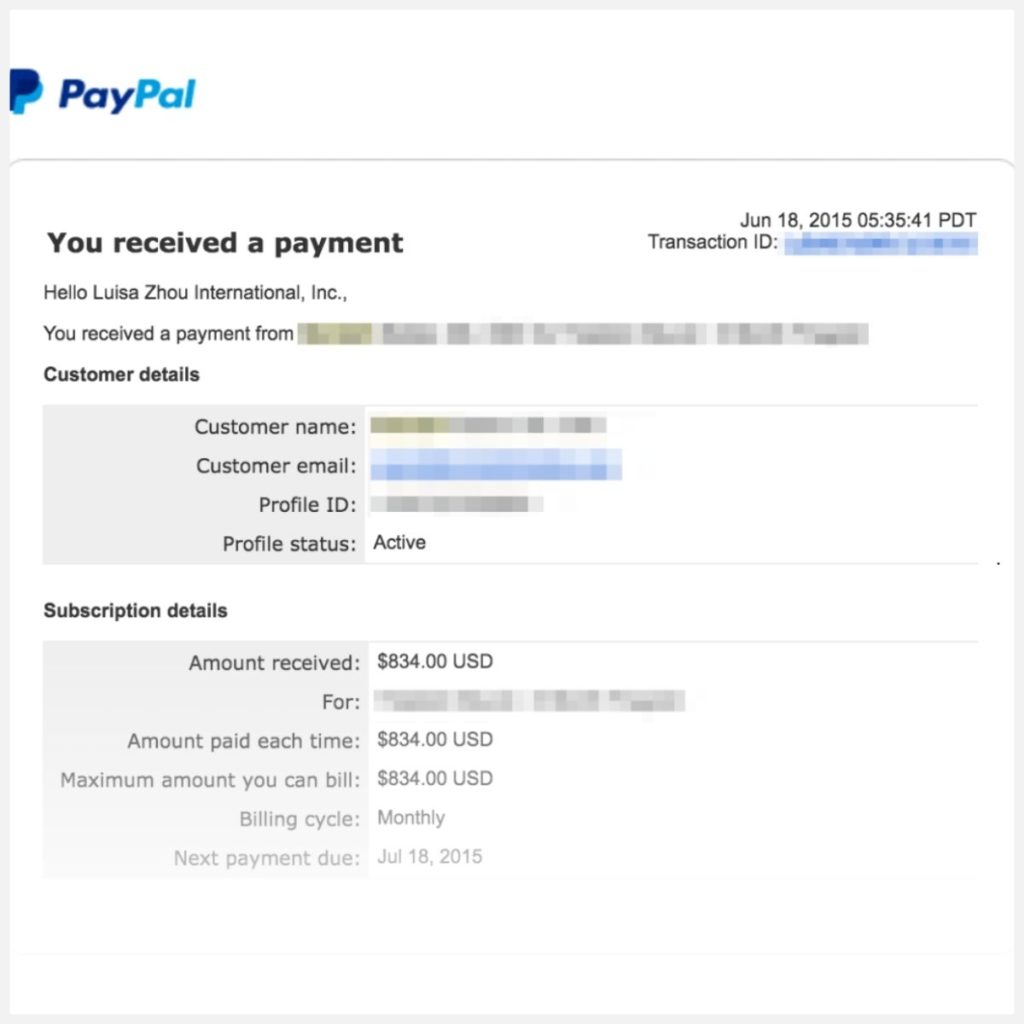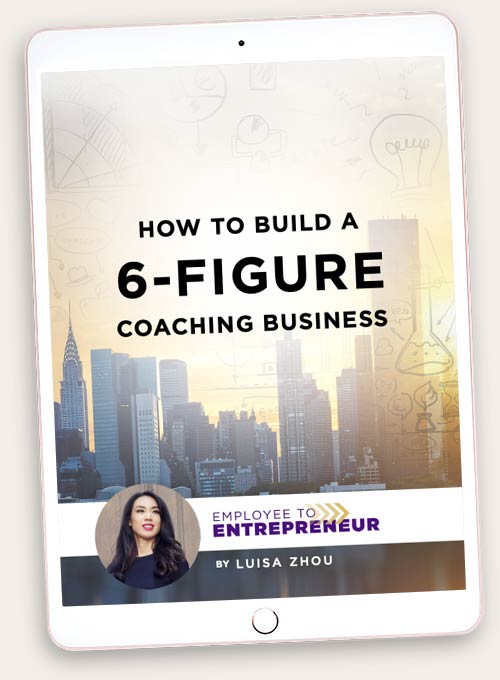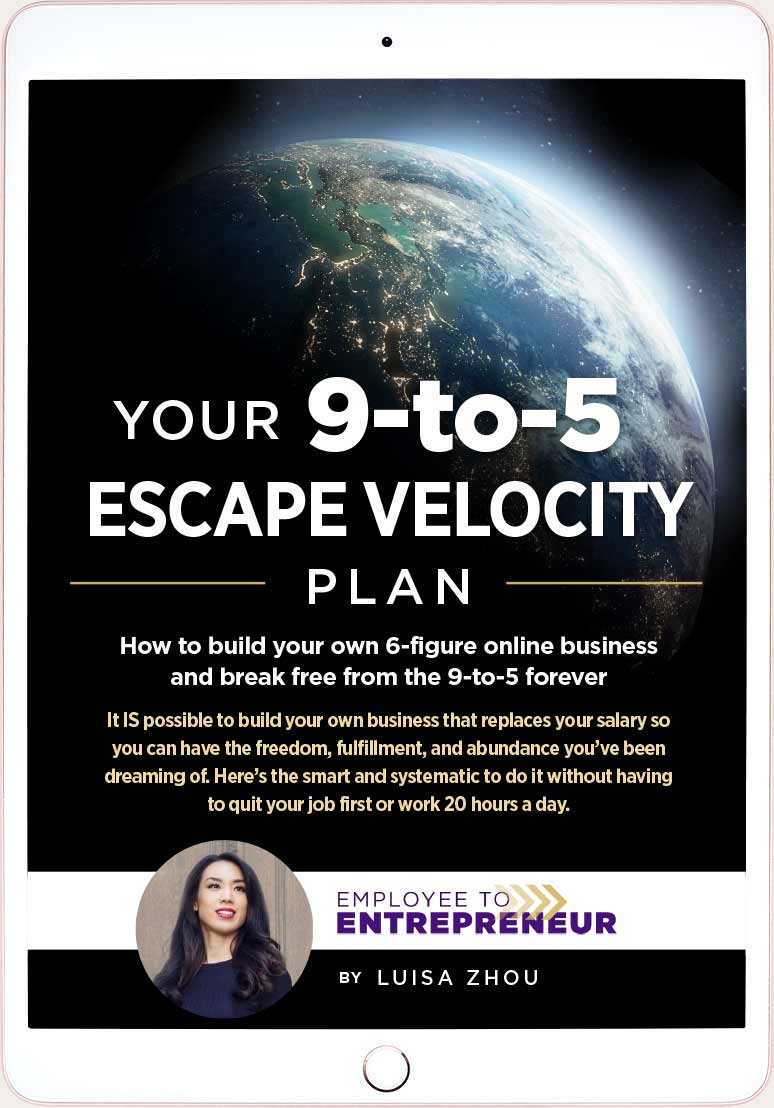Want to know how to write a simple coaching business plan?
You’ve come to the right place. Today, you’ll learn how to create a coaching business plan to get clarity fast.
Here’s what you need to know!
You’ll learn…
- Do you need a coaching business plan?
- How do you write your coaching business plan?
- Coaching business plan template
Do you need a coaching business plan?
Here’s the thing:
You actually don’t need a coaching business plan.
I know on the surface, it might look like running a business involves fancy marketing tactics or that it takes an MBA to make it happen. And that a coaching business plan is part of it all.
But the truth is:
Owning a business is not a fancy, pie-in-the-sky thing that’s only available to certain people.
That’s why I don’t typically tell my students to create a business plan, because they don’t really need one.
But if you want a roadmap for yourself or you’re applying for a grant or funding (which might require a business plan), then, you might spend some time on a business plan.
That said, keep it simple and don’t spend too much time on it.
After all, there are plenty of steps you need to take to build your coaching business. You need to…
- Find your business idea and audience
- Understand how to position your offer
- Learn marketing and sales
And to get a quick start, the best place to start is to talk to potential clients. (You should do this before you write your business plan.)
Hop on a few calls and ask your potential clients why they’d want to buy your services. Not only will you get out of your head, actually understand what your clients are looking for, and get their feedback, but you might even land a client or two.
And these types of quick wins will build your confidence fast so that you see just how possible it is for you to build a business.
To find people to talk to, go to an online forum (like a Facebook group) where your audience hangs out and ask them if they want to get your advice in exchange for a market research call where you can ask them questions about what they’re looking for in terms of your services and why.
I explain the process in more detail here:
You’ll get tons of material for your coaching business plan — and you’ll create a really valuable plan, rather than base it on your own assumptions (a surefire way to fail as a new business owner).
Get the Ultimate Guide
for building a
6-Figure Coaching Business so you can achieve more freedom!
How do you write your coaching business plan?
The next step is to write your plan with this coaching business plan outline:
Introduction
- Executive Summary
- Company Description
- Product/Service Description
Value Proposition
- Market Analysis
- Value Proposition
Business Model
- Operations
- Marketing
- Sales Strategy
- Growth Plan
- Management & Staffing
- Financial Summary
And how do you write each of these steps? That’s what we’ll look at next.
Step 1: Introduction
- Executive Summary
An executive summary summarizes your coaching business plan. Include a high-level overview of:
- What your business does
- What you sell (your coaching services)
- Your business goals, what your market looks like
- Who your clients are
- How your coaching differs from other coaching offers out there
- How big you envision your business to get
- What your business model looks like
- Company Description
The company description explains what your business does and includes:
- The business structure (is your coaching business a sole proprietorship, incorporation, or another business structure?)
- Your coaching industry
- Your services
- Your long-term plan for if you want to ultimately sell or keep your business
- Your vision, mission, and values
- Your short-term, next-year goals and long-term goals for the next 1-5 years
- Your team (although you’ll likely not have one when you’re starting your business)
- Product/Service Description
In this section, you present your coaching pricing strategy. How much do you charge for your services? (I recommend $1,500 for a 3-month package as a new coach.)
What pricing model do you use? Monthly, per-session, or a package price? I’m strongly in favor of a package price. After all, if your client doesn’t commit to a set amount of time for their coaching, how will they get results?
Also, is there a risk that your coaching offer infringes on someone’s IP rights? The main risk would be your coaching business name. That’s one of the reasons why the best way to get started is to use your own name as the name of your coaching business.
Step 2: Value proposition
The next step is your value proposition, which consists of two parts: your market analysis and value proposition.
Market analysis
First, you need to understand your target market. That means both your clients’ demographics and psychographics.
Their demographics are:
- Where they live
- Age
- Education
- Income
- Interests
But even more so, their psychographics explain why they buy from you. Your job is to figure out how to explain why your service is the one for them. In a way that’s true and believable and that connects with your potential clients.
What language do they use to describe their needs or goals? If you look at a 40-year old parent, they’ll describe their weight loss goals very differently than a 25-year old.
Ask yourself:
- What is the problem my clients want to solve?
- Why can’t my clients solve it right away?
- What’s the measurable outcome my clients want to achieve?
You also need to understand your industry. How big is your potential market? What trends are there? How might your industry be changing over time?
You can look at news outlets, government statistics offices, and academic research to understand where your industry is headed.
Additionally, your value proposition includes a SWOT analysis. Here, you analyze your strengths, weaknesses, opportunities, and threats.
Remember that you don’t have perfect information and you will sometimes operate on assumptions.
So ask yourself what assumptions you have that could cause your business to fail, if they’re proven wrong. For example, assumptions about your coaching clients could potentially mean that your business fails.
Finally, you need to include a section on your competition, something that Harvard professor Michael Porter’s Five Forces Framework is useful for.
This model builds on five forces to determine the competitive intensity and the attractiveness of an industry in terms of profitability.
A coaching industry with a lot of competition won’t have high profitability. But fortunately, most coaching and consulting industries have mild competition, which means that they have room for high returns.
The Five Forces Framework consists of:
- Threat of new entry. How likely is it that new businesses will enter your market? It’s relatively easy to start an online coaching business, so there can be a lot of competition.
- Buyer power. What buying power do your clients have? You need to consider this so that you know if YOUR audience has buying power. For instance, if you sell career coaching to employees, they’ll have much better buying power than someone who is unemployed.
- Supplier power. Are there many suppliers on the market? If not, you might need to cover high costs. As a coach, this isn’t a huge concern for you, because you don’t rely on suppliers to sell your services.
- Threat of substitution. How likely is it that your coaching service will be substituted by a low-cost, better alternative? High-ticket coaching isn’t easy to substitute because people aren’t buying your services for the price; they’re buying it for the transformation they get.
- Competitive rivalry. How can you distinguish yourself from your competition? A few examples include: serving a specific group of clients, your marketing, or establishing technological leadership. As a coach, you’ll most likely use your niche and/or branding to stand out.
Value proposition
One of the main reasons why 20% of small businesses fail within the first year is that they don’t understand their value proposition. Your value proposition explains how your business will stand out.
Michael Porter’s Generic Competitive Strategies shows you how to create one.
It includes three factors:
- Cost leadership. If you go with this value proposition, you lead with price. You become a low-cost business in your industry. This isn’t anything I recommend for coaches. Scaling low-cost coaching would take a lot of resources and you’re far better off with offering high-ticket coaching services and then scaling less hands-on products, such as online courses.
- Differentiation. Your business stands out by being unique, for instance by having a unique solution to a problem. Take my client David, a health coach, who helps people lose weight with the help of herbs. That’s a very unique way to position a health coaching business.
- Cost focus or differentiation focus. Your business serves a specific niche, a specific target market need or a target market cost behavior.
For example, I started my current business when I realized that there wasn’t a great product for employees who want to quit their jobs and become entrepreneurs. I used differentiation focus to target a specific segment within a competitive market (business coaching).
This chart should help you answer two questions:
- Who is your target customer?
- How are you different from the competition?
Step 3: Business model
The next step is your business model, which consists of six parts:
Operations
An operations plan includes the workflows you’ll need to implement to make your coaching business work.
As a coach, you don’t need to put too much thought into this part. An operations plan mainly includes information about things like suppliers, logistics, and inventory. A coaching business doesn’t need more than yourself and your laptop.
Marketing
Your marketing plan explains how you’re going to market and promote your business. Focus on where your clients are hanging out, such as on Instagram or Facebook or in a physical space like a Toastmasters or Meetup event.
Include answers to these questions in your marketing plan:
- What is the pricing of your coaching services? Why did you choose this price?
- How do you promote your coaching business?
- Where will you sell your coaching services?
- What are you selling and how is that different from other existing coaching services?
Sales strategy
Next, what does your sales strategy look like? In other words, what are the steps you take to make a sale?
For instance, your sales strategy could look something like this:
Facebook ad → Potential client subscribes to your email list → Potential client reads your emails → Potential client buys from you
Growth plan
What will your business growth look like? How will you, specifically and realistically, make it happen? Define the exact steps you’ll take to grow your business.
In this quick video, I show you how to plan for business growth:
Management & staffing
How is your business run? As a new coach, you’ll likely be the only person in your business. You shouldn’t hire anyone before you’ve done everything yourself for a while. The reason is simple: you’ll need to identify your market and build systems before taking on other people.
But you can define if you’ll start hiring people at some point. Decide what your business will look like.
Financial summary
Your financial plan consists of your income statement, balance sheet, and cash-flow statement.
Income statement: Where do you get your revenue? What are your expenses? Use this information to make a profit-and-loss calculation. At this point, you can estimate your income. Around one out of every ten sales calls will turn into a sale in the beginning, when you’re just learning to sell.
Cash-flow statement: Your cash-flow statement is like your income statement, but you’ll also take into account when revenues are collected and expenses are paid. If more money comes in than is going out, you have positive cash-flow.
Balance sheet: List your business assets that you own and owe. Deduct liabilities from assets to get your business’ shareholder equity.
Plus, you’ll need to consider your risks. What are the biggest risks to your financial viability?
For example, let’s say you’re a health coach who teams up with a local gym to provide their members with health coaching. Your biggest financial risk (assuming this was your only way to get clients) would be that the gym went bankrupt.
If you know your risks upfront, you can prepare for them. By including them in your business plan, you understand your risks and can plan ahead.
Take the example above. You might team up with two or more gyms to ensure that you don’t rely on one income source.
And next, let’s take a look at a coaching business plan template that makes it easy to create your business plan.
Get the Ultimate Guide
for building a
6-Figure Coaching Business so you can achieve more freedom!
Coaching business plan template
One of my favorite ways to create a business plan is to use the Business Model Canvas. This business model template was first developed by Alexander Osterwalder in 2005 and the idea behind it was to simplify how business plans are created.
The plan includes nine building blocks and you’ll be able to fill in each block with the help of the brainstorming you’ve done in the steps above.
I put together this fillable PDF to help you use what you learned in this post:
Start by filling in this PDF to answer all the business plan elements we’ve looked at so far.
And here’s the Business Model Canvas as a PDF.
Let’s take a look at each of the building blocks here below:
Value proposition
What coaching services do you sell? What’s the problem you help solve with your services? And what value are you providing to your clients?
As a coach, you sell coaching services. The best way to get started is to sell one-on-one coaching. You can later expand into group programs and online courses.
Customer segments
Who are your most important client segments? When you’re starting your business, one client segment is enough. In other words, what’s your niche?
Not sure how to get started? This guide shows you how to find a niche.
Revenue streams
List your revenue streams. As you’re starting your business, you’ll likely have just one: your first coaching package. Later on, as said, you can add on group programs and self-study courses.
Channels
How do you communicate with your clients? Which channels do you use to do so? For example, your main channel might be a few Facebook groups or Instagram. Essentially, this is your main marketing channel.
Here you can read more about marketing to coaching clients and the different channels you can use.
Customer relationships
What’s your relationship with your clients? Is it personal? Automated? It all depends on what your clients expect. For coaching services and especially as you start your business, your relationship with your audience will be personal.
When you’re building your business, your #1 goal is to give as much value as you can to people (without expecting something in return from them). That’s how you establish your reputation and show your value.
Just like I did when I landed my first client. I had helped her for free for two weeks. She realized that I could help her even more if we worked together and asked if I’d be interested.

Key activities
What are your key activities for executing your value proposition? In other words: what do you need to do to make your business operate successfully?
Your key activities are your coaching services; your client calls and the support you give them in between calls.
Key resources
What knowledge, money, people, and means do you need to run your business?
This one is easy: you only need yourself, your skill, an internet connection, and a laptop!
The coaching business model is great for new entrepreneurs who want to start a business because you can start without any upfront investment and by using skills you already have.
Key partners
Who are your key partners and suppliers? What partners are essential to your business?
As a new coach, you don’t really need partners. Later on in your business, you might have affiliate partners who promote you and joint ventures where you team up with another business to sell your product or service.
Cost structure
What are your business costs? These are determined based on your key resources, key activities, and key partnerships.
Early on, your costs will be very low. The main costs you’ll have include:
- Coaching contract (you can buy an affordable template rather than work directly with a lawyer)
- HelloSign (a virtual contract management tool with which you can send your contracts to your clients)
- Calendly (a scheduling tool for your coaching sessions)
- Payment processor, such as Stripe or PayPal (you need a payment processor to get paid by your clients and these will charge you a small commission)
- Educational material, such as business building programs/courses and books
But as your business grows, you will likely take on new costs. For instance: hiring costs (for example, a virtual assistant, support coaches for your programs, Facebook ads manager, and so on), advertising costs (Facebook ads), and different tools to build your business.
Get the Ultimate Guide
for building a
6-Figure Coaching Business so you can achieve more freedom!
Next steps!
There you have it! Now you know how to write a coaching business plan.
Ultimately, your business will only grow if you take steps to market and sell your coaching services. Once you’ve written a short, simple business plan, go out there and get your first paying clients. THAT’s how you prove to yourself just how possible it is to build your own coaching business.
Want to learn how to build your coaching business?
Get my free coaching business blueprint here:

Want to Build a 6-Figure Coaching Business So You Can Achieve More Freedom?
Get Instant Access To My FREE Ultimate Guide Below!
When you sign up, you’ll also receive regular updates on building a successful online business.
Learn more:
How to Build Your Coaching Business
Checklist for Starting a Coaching Business
How to Build an Online Coach Business









2 Responses
Just a brief note to say thank you for taking the time to pull this amazing summary (and words of encouragement) together. I’m hoping to start my coaching business soon and this summary does a great job of pulling all the different tools and perspectives together.
You’re welcome! Good luck with your business launch!